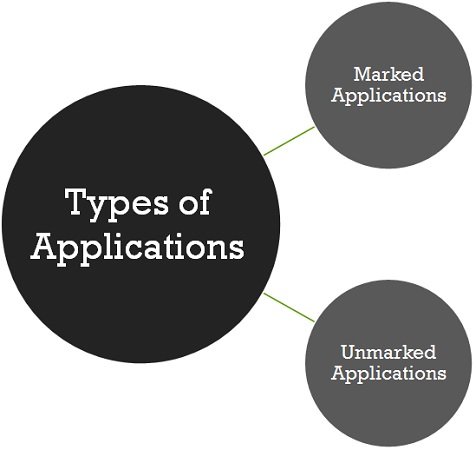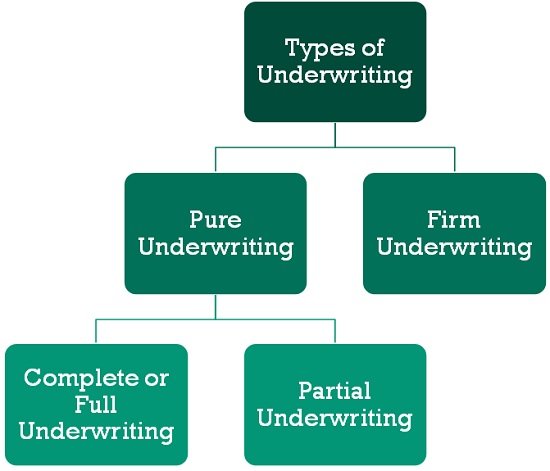Definition: Underwriting refers to the process in which an underwriter accepts the financial risk for consideration, i.e. fee. It is the process of extending a guarantee to the company to make certain that the securities offered to the public get subscriptions within the specified time.
Underwriting of shares and debentures is a contract between the company and underwriters. As per this contract, the underwriters agree to take up either whole or a certain part of the securities offered for sale by the company to the public but failed to get a subscription.
Meaning of Underwriting
Underwriting means undertaking responsibility that the securities offered to the public to secure subscription will be subscribed in full. If the company fails to secure a 100% subscription, an underwriter will come forward to subscribe to the remaining securities. This is to ensure that the company gets the least subscription required as per the rules.
Basic
When a company goes public, there is always an uncertainty about whether the shares offered will be subscribed by the public in full or not.
The underwriting agreement contract gives a guarantee to the company that it will be able to raise capital without any problem.
Points to Remember
- As per guidelines issued by SEBI, underwriting is not compulsory. This is to say; the issuer can make a decision on whether the issue is to be underwritten or not.
- If the issue is not underwritten and the company fails to receive a 90% subscription, the full amount received as a subscription has to be refunded.
Salient Features of Underwriting
- Authorization by AOA: Companies’ Articles of Association should permit the underwriting of securities.
- Guarantee: Underwriting means undertaking responsibility or providing the guarantee.
- Contract: It is a contract between the company and underwriters, which is enforceable by law. The contract may or may not be conditional.
- Ensures Minimum Subscription: If the company fails to get a minimum subscription, then the underwriters take up non-subscribed shares.
- Commission: For the services provided by the underwriters, they charge a commission. If the shares get a full subscription, underwriters need not take up the shares. But, they are entitled to commission.
Who is an Underwriter?
The underwriter is the one who gives the guarantee of taking up unsubscribed shares. Underwriters can be an individual, partnership firms, or companies. The underwriters provide these services for a price, i.e. underwriting commission. The company pays a commission to the underwriter only after the allotment of shares. The shares which remain unsubscribed by the public are issued to the underwriter in the ratio of liability agreed by them.
Underwriters can be of two kinds:
Sole Underwriters
When the entire issue of securities is underwritten by only one underwriter. The underwriter is the sole underwriter. In this case,, there is no distinction between marked and unmarked applications.
Joint Underwriters
When a company enters into a contract with many underwriters to cover the financial risk. These underwriters are joint underwriters and the arrangement is joint underwriting or co-underwriting. In this, an individual underwriter will be liable for the extent of securities underwritten by him or her.
In these cases, the issue of identification of application arises.
Basically, there are two types of applications:
Marked Applications
Underwriters issue application forms to the people for subscribing to securities. These applications bear the stamp of the individual underwriter who issued those forms. In this way, the identification of applications is possible. This helps in the calculation of the amount payable as commission. Hence, these are credited to the concerned underwriter.
Unmarked Applications
Unmarked applications are those which do not bear any stamp of the underwriters. This is because the company receives it directly due to its own efforts. That is why they are alternatively known as direct applications.
Important: In such applications, in the case of partial underwriting, first of all, the benefit is given to the company to the extent to which securities. If there is any surplus, the benefit is distributed among the underwriters. Division of surplus amount is in the ratio of their gross liability.
If the issue is fully underwritten then the benefit is distributed among the underwriters in the ratio of their gross liability.
Who are sub-underwriters?
An underwriter can take help from other underwriters to assist in performing the task of underwriting. So they ultimately work under the principal underwriter and are answerable to him. Hence, they are sub-underwriters.
There is no involvement of the company in such type of contract. This is because they enter into the contract with the principal underwriter and not with the company.
In short, an underwriter can appoint some underwriters to work under him as sub-underwriters. They receive their remuneration from the underwriter as an ‘overriding commission‘. They are answerable to him only.
Underwriting Commission
The underwriting commission is payable to the underwriters for the services. The services include the task of securing minimum subscription quantum from the public when the company introduces new issues of securities. The commission is payable to the underwriters for the risk undertaken by them.
Conditions for the Payment of Commission
- Payment of commission is in cash or in fully paid up securities or a combination thereof.
- The payment of commission has to be authorized by the articles of association of the company.
- The maximum commission payable would be 5% in the case of shares and 2.5% in the case of debentures.
- The name and addresses of the underwriters and the rate of the commission are disclosed in the prospectus or statement in lieu of the prospectus.
- The payment of commission is on the whole issue underwritten, regardless of the fact that the entire issue may be subscribed by the public.
- Calculation of commission is on the issue price of the securities except when mentioned otherwise.
- No commission is payable on the amount taken up by promoters, directors, employees, friends and business associates.
Types of Underwriting
There are two types of underwriting:
Pure Underwriting
Here, the liability of the underwriter is completely contingent. That is he agrees to subscribe for shares which remain unsubscribed by the public. Here, the underwriter agrees to take up the proportion which fails to secure a public subscription. Hence, if shares get full subscription or oversubscription, the underwriter is not liable to take up shares. It can be of two types:
- Complete or Full Underwriting: When the entire issue of securities is underwritten, it is complete underwriting. Further, the issue is either underwritten by a single underwriter or jointly by several underwriters to cover the risk.
- Partial Underwriting: The situation when only a part (say 80% or 60%) of the issue of securities is underwritten by one or more underwriters, it is partial underwriting. In this case, the marked applications will be calculated as:
Marked Applications = Total number of applications received × percentage of underwriting
Firm Underwriting
In this agreement, the liability of the underwriter is half contingent and half definite. There is a definite commitment to accept a certain number of shares regardless of the number of shares subscribed for by the general public. Here, the ascertainment of the underwriter’s liability is in addition to the shares, which are firmly underwritten. In simple words, he has to accept:
- All the shares the underwriter has committed for ‘firm.’
- All the shares the underwriter is bound to take as per the agreement.
A word from Business Jargons
At present, financial institutions like LIC, UTI, IDBI, SBI and other commercial banks provide these services. They provide guaranteed payment when there is damage or financial loss. Further, they cover the financial risk for liability resulting from that guarantee.


Leave a Reply